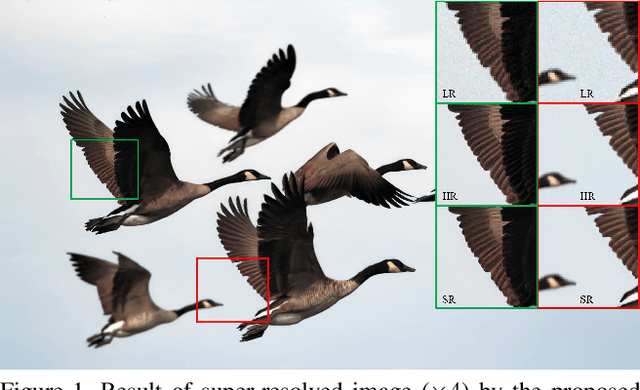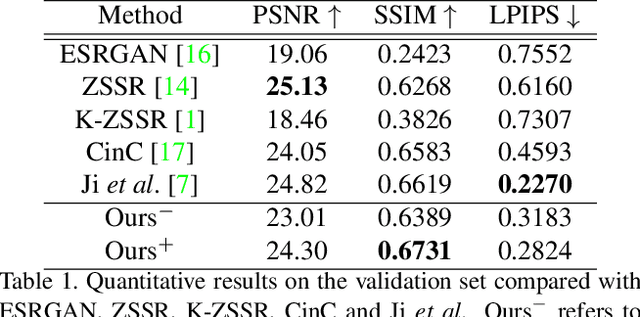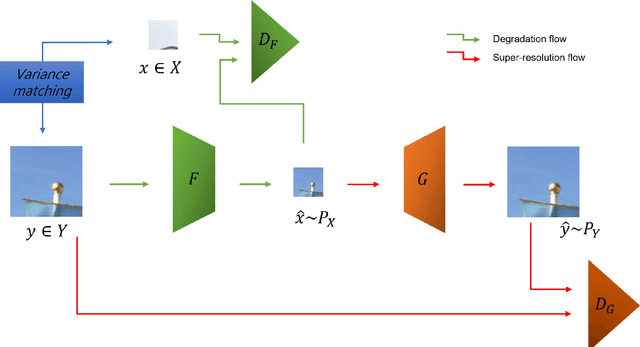Simple and Efficient Unpaired Real-world Super-Resolution using Image Statistics
Paper and Code
Sep 19, 2021



Learning super-resolution (SR) network without the paired low resolution (LR) and high resolution (HR) image is difficult because direct supervision through the corresponding HR counterpart is unavailable. Recently, many real-world SR researches take advantage of the unpaired image-to-image translation technique. That is, they used two or more generative adversarial networks (GANs), each of which translates images from one domain to another domain, \eg, translates images from the HR domain to the LR domain. However, it is not easy to stably learn such a translation with GANs using unpaired data. In this study, we present a simple and efficient method of training of real-world SR network. To stably train the network, we use statistics of an image patch, such as means and variances. Our real-world SR framework consists of two GANs, one for translating HR images to LR images (degradation task) and the other for translating LR to HR (SR task). We argue that the unpaired image translation using GANs can be learned efficiently with our proposed data sampling strategy, namely, variance matching. We test our method on the NTIRE 2020 real-world SR dataset. Our method outperforms the current state-of-the-art method in terms of the SSIM metric as well as produces comparable results on the LPIPS metric.
 Add to Chrome
Add to Chrome Add to Firefox
Add to Firefox Add to Edge
Add to Edge